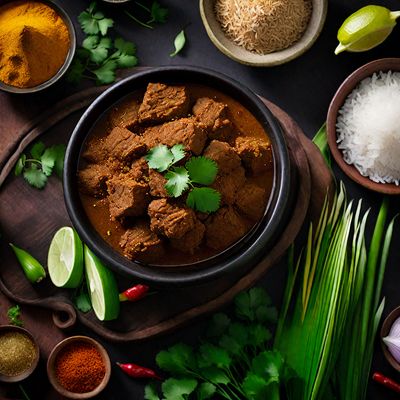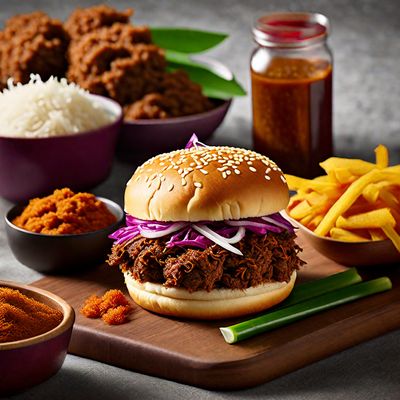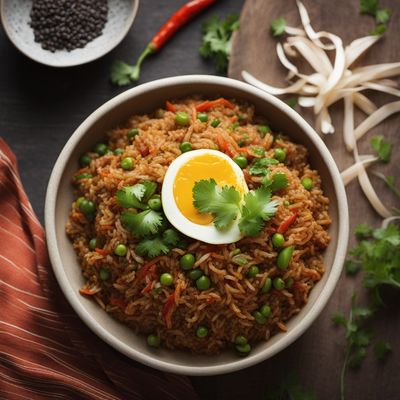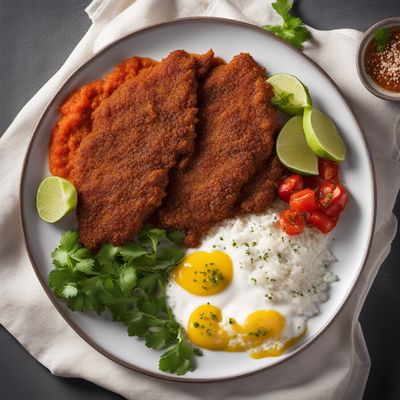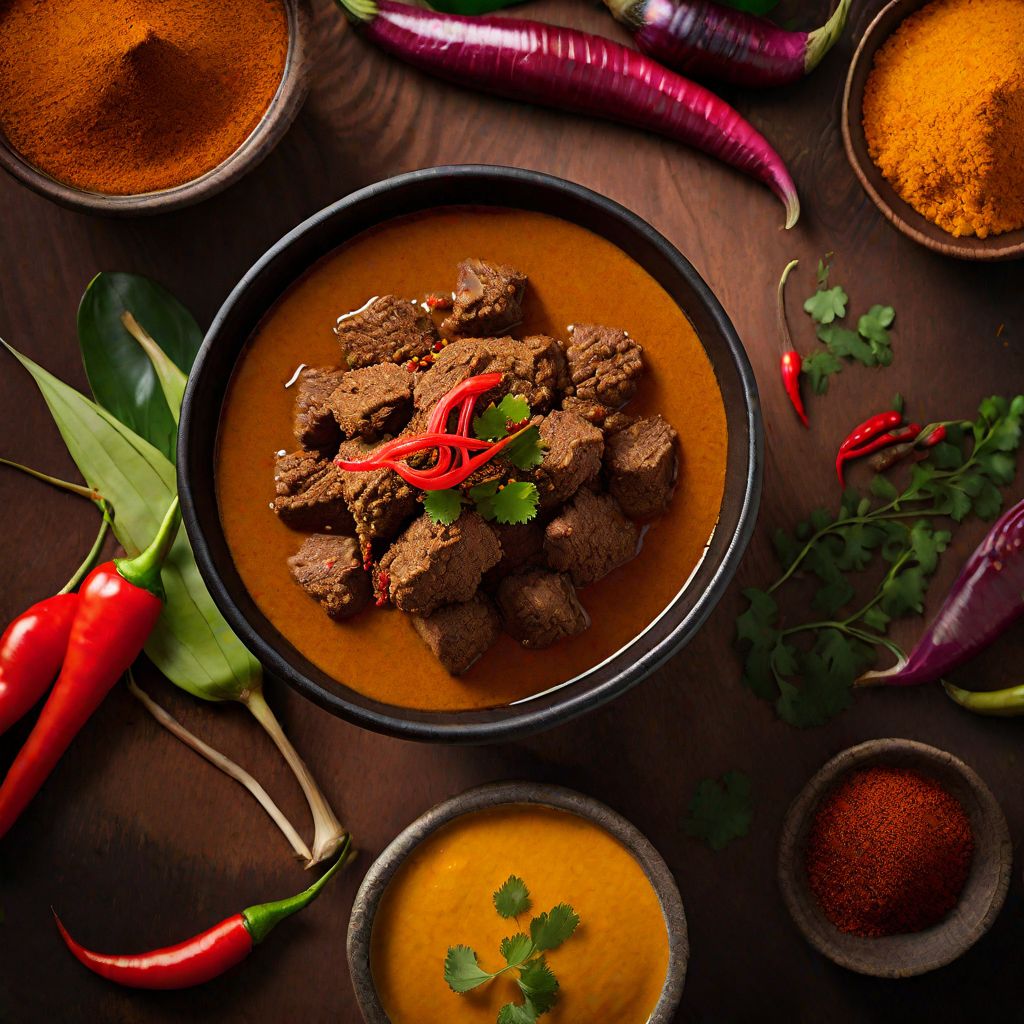
Recipe
Peruvian-style Rendang
Inca-Inspired Rendang: A Fusion of Indonesian and Peruvian Flavors
4.7 out of 5
In the vibrant Peruvian cuisine, we bring you a unique twist on the classic Indonesian dish, Rendang. This Peruvian-style Rendang combines the rich and aromatic flavors of traditional Rendang with the vibrant spices and ingredients found in Peruvian cuisine. Get ready to embark on a culinary journey that blends the best of both worlds!
Metadata
Preparation time
20 minutes
Cooking time
2-3 hours
Total time
2 hours 20 minutes - 3 hours 20 minutes
Yields
4 servings
Preparation difficulty
Medium
Suitable for
Gluten-free, Dairy-free, Nut-free, Low-carb, Paleo-friendly
Allergens
N/A
Not suitable for
Vegan, Vegetarian, Keto, High-carb, Low-fat
Ingredients
While the original Indonesian Rendang is slow-cooked with coconut milk and a blend of Indonesian spices, our Peruvian-style Rendang incorporates Peruvian spices and ingredients to create a fusion of flavors. We substitute some of the traditional Indonesian spices with Peruvian spices like aji amarillo and rocoto peppers, resulting in a unique and exciting twist on this beloved dish. We alse have the original recipe for Rendang, so you can check it out.
-
1 kg (2.2 lbs) beef, cut into cubes 1 kg (2.2 lbs) beef, cut into cubes
-
2 tablespoons vegetable oil 2 tablespoons vegetable oil
-
1 onion, finely chopped 1 onion, finely chopped
-
4 cloves garlic, minced 4 cloves garlic, minced
-
2 tablespoons aji amarillo paste 2 tablespoons aji amarillo paste
-
1 tablespoon rocoto pepper paste 1 tablespoon rocoto pepper paste
-
1 tablespoon cumin powder 1 tablespoon cumin powder
-
1 tablespoon paprika 1 tablespoon paprika
-
1 teaspoon turmeric powder 1 teaspoon turmeric powder
-
2 cups (470ml) beef broth 2 cups (470ml) beef broth
-
1 cup (240ml) coconut milk 1 cup (240ml) coconut milk
-
2 tablespoons soy sauce 2 tablespoons soy sauce
-
2 tablespoons brown sugar 2 tablespoons brown sugar
-
2 stalks lemongrass, bruised 2 stalks lemongrass, bruised
-
4 kaffir lime leaves 4 kaffir lime leaves
-
Salt, to taste Salt, to taste
Nutrition
- Calories (kcal / KJ): 450 kcal / 1884 KJ
- Fat (total, saturated): 25g, 10g
- Carbohydrates (total, sugars): 10g, 4g
- Protein: 45g
- Fiber: 2g
- Salt: 1.5g
Preparation
-
1.Heat the vegetable oil in a large pot over medium heat. Add the chopped onion and minced garlic, and sauté until fragrant.
-
2.Add the beef cubes to the pot and cook until browned on all sides.
-
3.In a small bowl, mix together the aji amarillo paste, rocoto pepper paste, cumin powder, paprika, and turmeric powder. Add this spice mixture to the pot and stir well to coat the beef.
-
4.Pour in the beef broth, coconut milk, soy sauce, and brown sugar. Stir to combine.
-
5.Add the bruised lemongrass stalks and kaffir lime leaves to the pot. Season with salt to taste.
-
6.Reduce the heat to low, cover the pot, and simmer for 2-3 hours, or until the beef is tender and the flavors have melded together.
-
7.Remove the lemongrass stalks and kaffir lime leaves before serving.
-
8.Serve the Peruvian-style Rendang hot with steamed rice or Peruvian-style potatoes.
Treat your ingredients with care...
- Aji Amarillo Paste — Aji amarillo paste is a key ingredient in Peruvian cuisine. It adds a unique and vibrant flavor to the dish. If you can't find aji amarillo paste, you can substitute it with a combination of yellow bell pepper and a small amount of habanero pepper for heat.
- Rocoto Pepper Paste — Rocoto pepper paste is another Peruvian ingredient that adds a spicy kick to the dish. If rocoto pepper paste is not available, you can use a combination of red bell pepper and a small amount of jalapeno pepper as a substitute.
- Lemongrass — Lemongrass adds a refreshing citrusy flavor to the dish. Bruise the lemongrass stalks by lightly pounding them with a rolling pin or the back of a knife to release their aroma.
- Kaffir Lime Leaves — Kaffir lime leaves have a distinct citrusy fragrance. If you can't find fresh kaffir lime leaves, you can use dried ones, but reduce the quantity by half as dried leaves are more potent.
Tips & Tricks
- For a spicier version, add more aji amarillo paste or rocoto pepper paste according to your preference.
- Marinating the beef in the spice mixture overnight will enhance the flavors.
- If the sauce is too thin, simmer uncovered for a longer time to thicken it.
- Leftover Peruvian-style Rendang tastes even better the next day as the flavors continue to develop.
Serving advice
Serve the Peruvian-style Rendang with steamed rice or Peruvian-style potatoes for a complete and satisfying meal. Garnish with fresh cilantro leaves for added freshness and color.
Presentation advice
Present the Peruvian-style Rendang in a shallow serving dish, allowing the rich sauce to be showcased. Place a few kaffir lime leaves on top as a garnish for an elegant touch.
More recipes...
For Rendang » Browse all
For Indonesian cuisine » Browse all
More Indonesian cuisine dishes » Browse all
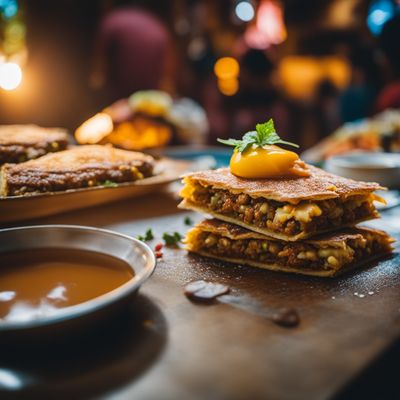
Martabak
Martabak is a popular street food in Indonesia that is typically served as a savory snack. It is a thick, crispy pancake that is filled with a...
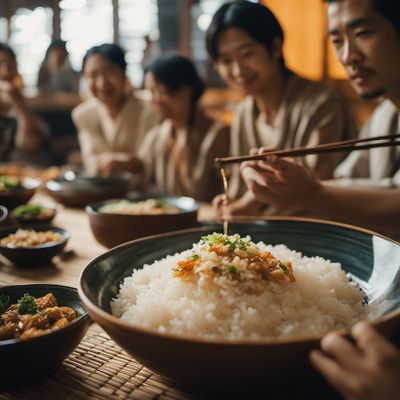
Kayu
Kayu is a traditional Japanese dish made from rice and water.

Rengginang
Rengginang is a traditional Indonesian snack that is made from rice. It is typically served as a snack or appetizer and is known for its crispy...
More Peruvian cuisine dishes » Browse all
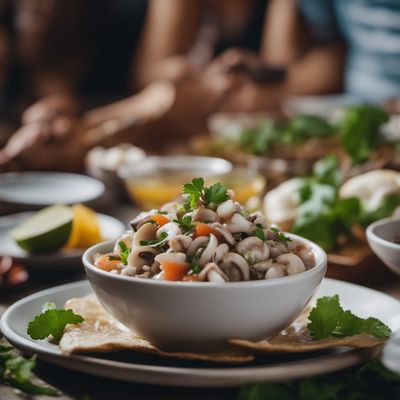
Ceviche de champignones
Mushroom Ceviche
Ceviche de champignones is a vegetarian version of the popular Latin American dish, ceviche. It is made with mushrooms instead of seafood and is a...

Anticucho de pulpo
Octopus Anticuchos
Anticucho de pulpo is a traditional Peruvian dish that consists of grilled octopus skewers marinated in a spicy sauce. It is a popular street food...

Pulpo almendrado
Almond Octopus
Pulpo almendrado is a traditional Mexican dish that features tender octopus cooked in a rich almond sauce. This dish is a perfect combination of...

